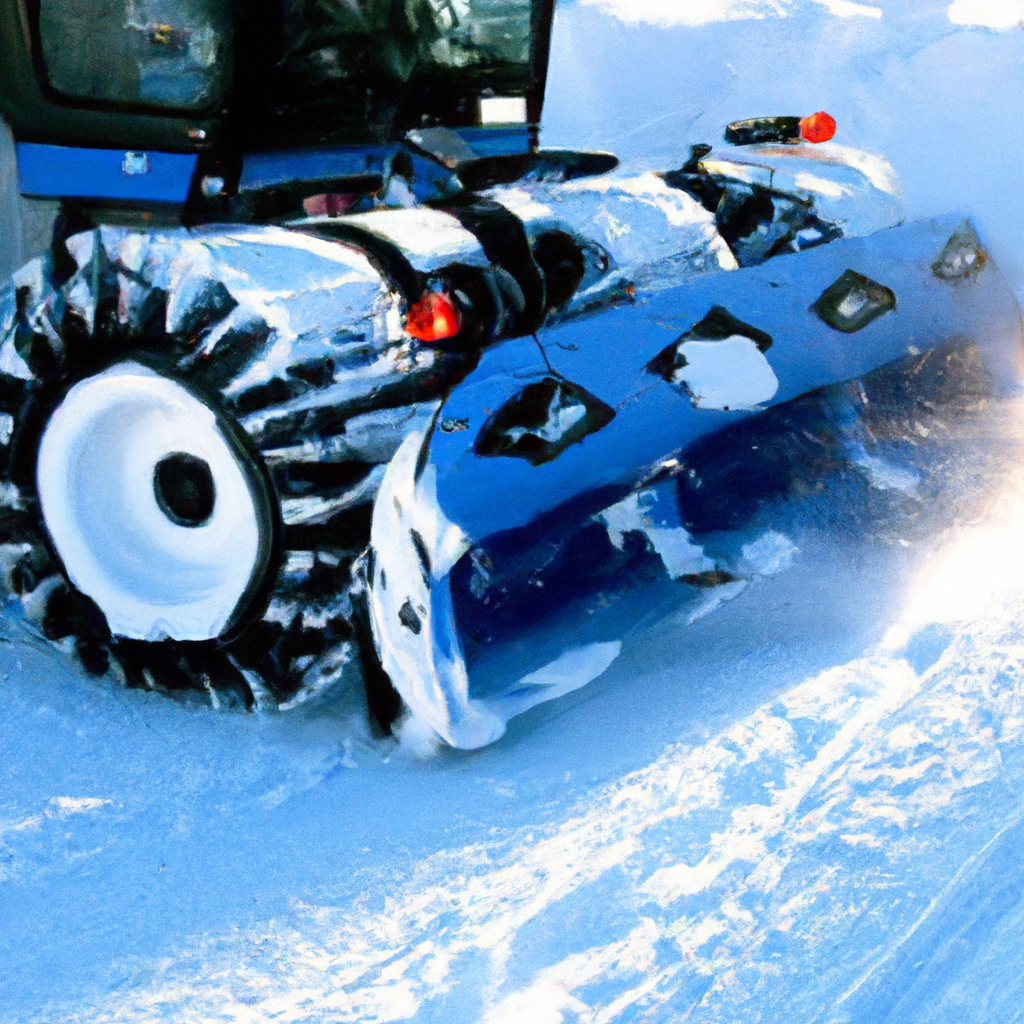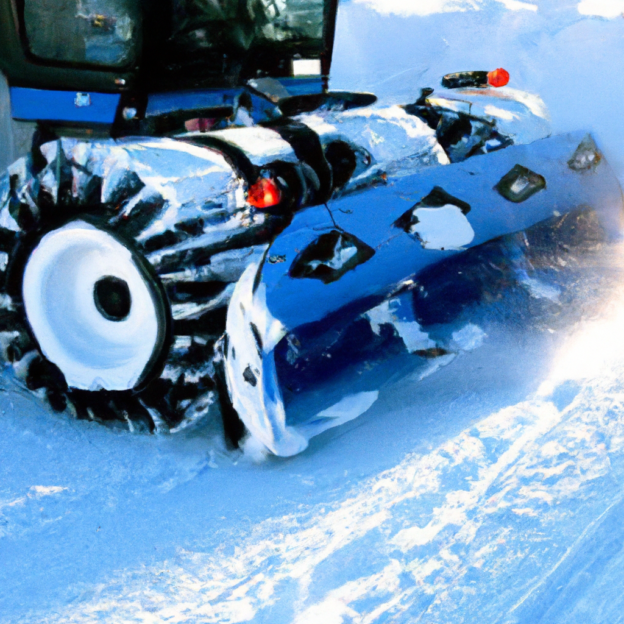When it comes to battling the winter snow, it’s always a tough decision to choose the right tool for the job. In the great debate between track-driven snowblowers and wheel-driven ones, opinions are divided. On one hand, track-driven snowblowers offer superior traction and maneuverability, providing a smooth and efficient clearing experience. On the other hand, wheel-driven snowblowers are known for their versatility and ease of use. In this article, we will explore the pros and cons of both options and help you determine which type of snowblower is best suited for your snow removal needs.
Noise Level
Track-driven snowblowers
When it comes to noise level, track-driven snowblowers tend to be quieter compared to their wheel-driven counterparts. The tracks on these snowblowers help to distribute the weight evenly, reducing vibrations and noise during operation. This is beneficial if you live in a residential area or have close neighbors who might be bothered by loud machinery. With a track-driven snowblower, you can effectively clear your driveway or pathways without creating too much noise pollution.
Wheel-driven snowblowers
In contrast, wheel-driven snowblowers can be a bit noisier during operation. The wheels on these machines tend to produce more vibrations, which can result in a louder noise output. While this might not be a significant concern for everyone, it is something to consider if you prefer a quieter snow-clearing experience or have noise restrictions in your neighborhood.
Maneuverability
Track-driven snowblowers
Track-driven snowblowers excel in terms of maneuverability, especially in difficult terrain or rough conditions. The tracks provide excellent traction and stability, allowing you to navigate through deep snow, icy patches, or uneven surfaces with ease. Whether you need to clear your driveway or tackle a larger area, track-driven snowblowers offer superior maneuverability by being able to move forward, backward, and make tight turns effortlessly.
Wheel-driven snowblowers
While wheel-driven snowblowers are still maneuverable, they may face limitations when it comes to certain terrains. The wheels can struggle in deep snow or when encountering slippery surfaces, potentially leading to reduced traction and difficulty in navigating through challenging conditions. However, in relatively flat areas with less demanding terrain, wheel-driven snowblowers can still effectively clear snow and provide adequate maneuverability.

Stability
Track-driven snowblowers
One of the significant advantages of track-driven snowblowers is their exceptional stability. The tracks provide a larger surface area that distributes the weight evenly, preventing the machine from tipping over or sliding on icy surfaces. This is particularly beneficial when maneuvering on steep slopes or uneven terrain, as the tracks offer stability and prevent accidents or mishaps during operation.
Wheel-driven snowblowers
While wheel-driven snowblowers also offer stability, they can be less stable than track-driven ones, especially on unpredictable terrains. The concentrated weight of the machine and the smaller surface area covered by the wheels can make them more prone to sliding or tipping in challenging conditions. However, on flat or less demanding surfaces, wheel-driven snowblowers can still operate with stability and effectively clear snow.
Traction
Track-driven snowblowers
Track-driven snowblowers are unmatched when it comes to traction. The tracks provide exceptional grip on various surfaces, including deep snow, icy patches, or uneven terrain. The design and construction of the tracks allow for better weight distribution, maximizing the contact area with the ground and enhancing traction. With this superior traction, you can confidently navigate through treacherous winter conditions without getting stuck or losing control of the snowblower.
Wheel-driven snowblowers
Although wheel-driven snowblowers offer decent traction, they may struggle in extremely challenging conditions. The wheels can slip on ice, struggle to gain traction on deep snow, or encounter difficulties on steep slopes. However, on relatively flat surfaces or with less demanding snow depth, wheel-driven snowblowers can still provide adequate traction and effectively clear snow.

Snow Depth
Track-driven snowblowers
Track-driven snowblowers thrive in deep snow conditions. The tracks allow the machine to distribute its weight more evenly, preventing it from getting stuck or bogged down. Whether you need to clear a heavily snowed-in driveway, a walkway, or a larger area, track-driven snowblowers can power through deep snow with ease, saving you time and effort.
Wheel-driven snowblowers
While wheel-driven snowblowers can handle moderate snow depth, they may face limitations in extremely deep snow conditions. The wheels can struggle to gain traction or get stuck, making it more challenging to clear areas with heavy snowfall. If you live in an area that experiences heavy snowfall or frequently encounters deep snow, a track-driven snowblower might be the more suitable option.
Speed
Track-driven snowblowers
Track-driven snowblowers can often provide faster clearing speeds compared to wheel-driven ones. The superior traction and stability offered by the tracks allow for more efficient operation, enabling you to clear snow at a quicker pace. Whether you have a time constraint or prefer a more expedient snow-clearing process, a track-driven snowblower can help you get the job done faster.
Wheel-driven snowblowers
While wheel-driven snowblowers may not match the speed of track-driven ones, they can still clear snow at a reasonable rate. The wheels provide sufficient power to move the machine and remove snow effectively, ensuring a relatively efficient snow-clearing process. If speed is not a significant concern for you, a wheel-driven snowblower can still offer satisfactory performance.
Ease of Use
Track-driven snowblowers
Track-driven snowblowers are generally considered to be user-friendly and easy to operate. The tracks provide excellent traction and stability, minimizing the effort required to maneuver through tough conditions. Additionally, the controls and features of track-driven snowblowers are designed with convenience in mind, allowing for smooth operation and comfortable snow clearing experience.
Wheel-driven snowblowers
Similarly, wheel-driven snowblowers are also designed to be user-friendly. The steering and controls on these machines are usually straightforward and intuitive. However, they may require a bit more effort to operate in challenging conditions due to potential traction limitations. Nonetheless, with proper guidance and practice, operating a wheel-driven snowblower can be relatively easy and uncomplicated.
Maneuvering on Slopes
Track-driven snowblowers
When it comes to maneuvering on slopes, track-driven snowblowers are the superior choice. The tracks offer exceptional traction and stability, preventing the machine from sliding or losing control on steep inclines. Whether you need to clear snow on a sloped driveway or navigate hilly terrains, a track-driven snowblower can handle the challenge with ease and ensure safe and efficient snow removal.
Wheel-driven snowblowers
While wheel-driven snowblowers can still operate on slopes, they may face limitations in terms of stability and traction. The wheels can struggle to maintain traction on steep inclines, potentially impacting maneuverability and control. However, on gentler slopes or relatively flat areas, wheel-driven snowblowers can still effectively clear snow and provide satisfactory performance.
Maintenance
Track-driven snowblowers
Track-driven snowblowers require regular maintenance to ensure optimal performance and longevity. The tracks should be inspected for any signs of wear or damage, and proper lubrication is essential to keep them functioning smoothly. Additionally, the engine, belts, and other components of the snowblower should be regularly checked and maintained according to the manufacturer’s recommendations. By following the appropriate maintenance routine, you can ensure that your track-driven snowblower operates efficiently and lasts for years to come.
Wheel-driven snowblowers
Similar to track-driven snowblowers, wheel-driven ones also require regular maintenance. The wheels should be inspected for wear or damage, and proper lubrication is necessary to keep them running smoothly. Additionally, the engine, belts, and other parts of the snowblower should be checked and maintained as per the manufacturer’s guidelines. Proper maintenance will help extend the lifespan of your wheel-driven snowblower and ensure optimal performance.
Cost
Track-driven snowblowers
Track-driven snowblowers are generally considered to be more expensive compared to wheel-driven models. The construction and design of the tracks contribute to their higher cost. However, the additional investment might be worthwhile if you live in an area with heavy snowfall or challenging terrains. The superior performance and capabilities of track-driven snowblowers can justify their higher price tag in terms of efficiency, durability, and the convenience they offer.
Wheel-driven snowblowers
Wheel-driven snowblowers, on the other hand, are typically more affordable compared to track-driven models. They are commonly available at a lower price range, making them a suitable option for those on a tighter budget or who live in areas with less frequent or less severe winters. While the cost may be lower, wheel-driven snowblowers can still effectively clear snow and provide satisfactory performance for many homeowners.
In conclusion, both track-driven and wheel-driven snowblowers have their pros and cons. Track-driven snowblowers offer superior maneuverability, stability, traction, and are well-suited for deep snow, while wheel-driven snowblowers can adequately clear snow on moderate surfaces and at a more affordable price. Ultimately, the choice between the two depends on your specific snow-clearing needs, budget, and the type of terrain you encounter. It is essential to consider these factors and weigh them against each other to make an informed decision that best suits your requirements.
